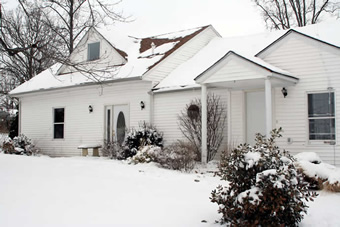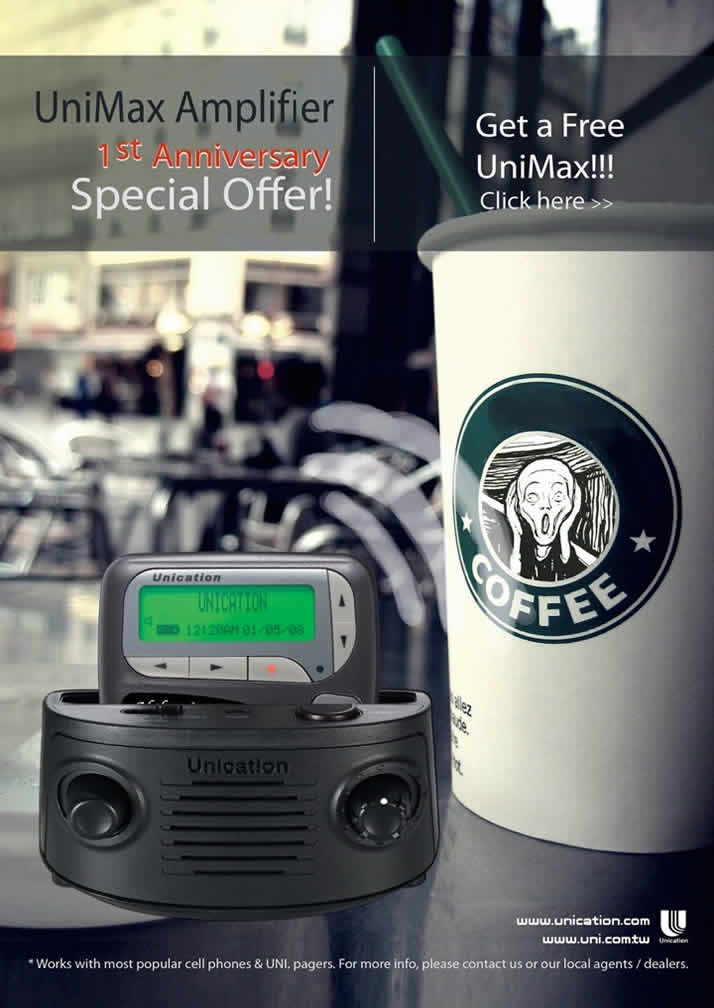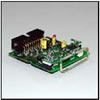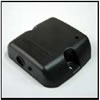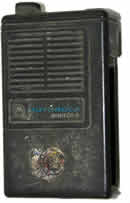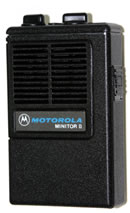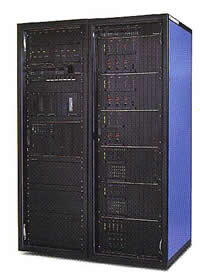BloostonLaw Telecom Update Published by the Law Offices of Blooston, Mordkofsky, Dickens, Duffy & Prendergast, LLP [Portions reproduced here with the firm's permission.] www.bloostonlaw.com |
| Vol. 13, No. 7 | x February 17, 2010 |
 NTIA Issues Round 2 BTOP Application Guidelines On Thursday, February 11, 2010, NTIA posted it's Grants Guidance for Comprehensive Community Infrastructure (CCI), Sustainable Broadband Adoption (SBA), and Public Computer Center (PCC) applications under the agency’s Broadband Technology Opportunities Program (BTOP). These documents contain information regarding the specific form of the individual applications and provide guidance on how to properly input information and submit each, depending on the type of project for which you are applying for funding. The filing window for Round 2 for both NTIA’s BTOP and RUS’ Broadband Initiative Program (BIP) opened on February 16, 2010, and the deadline for filing in either program is March 15, 2010. These documents and others are available at www.broadbandusa.gov. We are available to assist you with any questions you might have on any aspect of the broadband application process or to review your application before filing. BloostonLaw contacts: Ben Dickens, Gerry Duffy, John Prendergast, and Mary Sisak. |
 INSIDE THIS ISSUE - Snow ices FCC, Congress.
- Modified CPNI annual certification due March 1.
- FCC releases new census tract-level data on high speed Internet services.
- Virginia receives two BTOP grants totaling $21.5 million.
- Google plans to test super-fast broadband network.
|
Snow Ices FCC, Congress Two major snow storms struck the Washington, D.C., area last week and succeeded in putting the federal government on ice. The government was closed down Monday through Thursday of last week, leading into the Presidents’ Day holiday weekend. As a result, the Senate Commerce Committee and the House Energy and Commerce Committee postponed scheduled hearings, and the FCC pushed back its open meeting until tomorrow, February 18. As we reported last week, the following items will be on the meeting agenda: - E-Rate: An Order and Notice of Proposed Rulemaking to enable schools that receive funding from the E-Rate program to allow members of the general public to use the schools’ Internet access during non-operating hours at no additional cost to the Universal Service Fund. This order and notice do not permit or require any changes to E-Rate applications due on February 11, 2010.
- Ex Parte Reform: A Notice of Proposed Rulemaking to improve the transparency and effectiveness of the FCC’s decision-making process by reforming the ex parte rules.
- Procedural Reform: A Notice of Proposed Rulemaking to enhance the efficiency, openness, and transparency of the Commission’s proceedings by improving and modernizing certain organizational and procedural rules.
- National Broadband Plan Status Report: Commission staff will report on the status of the National Broadband Plan, providing a framework for the national purposes portion of the Plan.
Additionally, the public forum to discuss the creation of an emergency response interoperability center for public safety broadband communications, which was originally scheduled for February 10, from 2:00 p.m. - 4:00 p.m. in the Commission Meeting Room (TW-C305), will be rescheduled in the near future. And the fourth meeting of the Advisory Committee for the 2012 World Radiocommunication Conference (WRC-12 Advisory Committee) scheduled for February 10, 2010, at 11:00 a.m., was postponed. The meeting has not yet been rescheduled. Because of the numerous closings and disruptions caused by the weather, the FCC extended the deadline for all paper and electronic filings that were due February 5 through February 12 until February 16. The Commission, on its own motion, also has granted an extension of the deadline for filing reply comments in the WC Docket No. 05-25 proceeding on the analytical framework necessary to resolve issues in the Special Access Notice of Proposed Rulemaking, originally due February 17, to February 24. BloostonLaw contacts: Hal Mordkofsky, Ben Dickens, Gerry Duffy, and John Prendergast. FCC Releases New Census Tract-Level Data On High Speed Internet Services The FCC has released the first High-Speed Services for Internet Access report to be based on the new census tract-based Form 477 data collection requirements. The FCC has collected information from facilities-based broadband service providers since 2000. In 2008, the FCC released orders implementing significant improvements to its data collection. As part of the improvements, providers of fixed-location Internet access connections faster than 200 kilobits per second (kbps) report connection counts at the census tract level as well as the state level. All reporting providers, including mobile wireless providers, report connection counts for an increased number of upload and download speed tiers. Therefore, for the first time, this report summarizes information about fixed-location Internet access connections in 3,232 counties and 66,287 census tracts and in 72 combinations of upload and download advertised transmission speeds. Additionally, the report summarizes information about subscribers with full Internet access at transmission speeds above 200 kbps as part of their mobile wireless service package. New features of the report include: - FCC estimates of the share of households with fixed-location high-speed connections in individual census tracts and counties, which indicate there are substantial areas of relatively low and high adoption. In 200 counties (6% of counties, containing 1% of U.S. households), the FCC estimates that no more than 20% of households had such connections, while in 104 counties (3% of counties, containing 8% of U.S. households) the FCC estimates that at least 80% of households had such connections. Fixed-location technologies include asymmetric and symmetric digital subscriber line (DSL), wireline technologies other than DSL, cable modem service, fiber-to-the-premises (FTTP), satellite, fixed-wireless services provided by WISPs and others, power line, and other fixed-location technologies.
- New nationwide maps showing FCC estimates of household adoption rate ranges in individual census tracts – for fixed high-speed connections (that is, faster than 200 kbps in at least one direction) and separately for connections that meet the definition of broadband service used for the purposes of awarding broadband grants under the American Recovery and Reinvestment Act of 2009 (that is, 768 kbps or higher advertised downstream speeds and upstream speeds above 200 kbps).
- More finely detailed maps of areas with multiple high-speed service providers. Instead of a single ZIP Code-based map combining providers of connections over all technologies and to both residential and business end users, the FCC now maps: (1) providers of total (combined residential and business) fixed-location connections by census tract, (2) providers of residential fixed-location connections by census tract, and (3) providers making mobile wireless high-speed service available by census tract.
- New charts illustrating the relationship between household subscribership, or adoption, rates and demographic factors, such as median household income, household density, and educational attainment.
Other report highlights include: - High-speed Internet access connections to homes and businesses over fixed-location technologies increased by 10% during 2008, to 77 million. By contrast, the annual rate of increase was 17% during 2007.
- At year-end 2008, 25 million mobile wireless service subscribers had mobile devices (such as laptops and smartphones) with high-speed data plans for full Internet access. These subscribers are a subset of the 86 million subscribers whose mobile device was capable of transmitting information at speeds above 200 kbps, including subscribers who purchased only a voice service plan for the handset and subscribers whose data service included only customized-for-mobile content (for example, text and multimedia messaging, or the capacity to download ringtones and games). Because reporting practices previously varied among providers to a largely unknown degree, neither of the December 2008 figures is directly comparable to mobile wireless high-speed connections reported for earlier dates.
- Reported connections for the most widely adopted fixed-location technologies, cable modem and aDSL, increased by 14% and 3%, respectively, during 2008, to 41 million cable modem connections and 30 million aDSL connections, with the cable modem increase being partly due to more comprehensive reporting by small cable systems. A 56% increase in total FTTP connections, to 3 million, was the largest rate of increase among fixed-location technologies.
- Of the 102 million total high-speed connections at year-end 2008 (including residential and business fixed and mobile connections), 86 million (or 84% of the total) were faster than 200 kbps in both upstream and downstream directions, 77% met the definition of broadband service used for the purposes of awarding broadband grants under the American Recovery and Reinvestment Act of 2009 (with 768 kbps or higher advertised downstream speeds and upstream speeds above 200 kbps), 49% had downstream speeds of 3 megabits per second (mbps) or more and upload speeds above 200 kbps, 34% had down-stream speeds of 6 mbps or more and upload speeds above 200 kbps, and 11% had down-stream speeds of 10 mbps or more and upload speeds above 200 kbps.
- For fixed-location technologies as a group, 89% of connections met the definition of broadband service used for the purposes of awarding broadband grants under the American Recovery and Reinvestment Act of 2009 (with 768 kbps or higher advertised downstream speeds and up-stream speeds above 200 kbps). Among mobile wireless subscribers whose subscription included a data plan for full Internet access, 41% of subscriptions met the definition.
The report also includes statistics for residential high-speed connections at the national level and substantially expanded state-by-state information. The state-by-state information includes expanded information about speed tiers of connections in service in each state and newly available information about the distribution of counties and census tracts according to our estimated household adoption rates for fixed high-speed connections. BloostonLaw contacts: Ben Dickens, Gerry Duffy, John Prendergast, and Mary Sisak. VIRGINIA RECEIVES TWO BTOP GRANTS TOTALING $21.5 MILLION: The National Telecommunications and Information Administration (NTIA) has announced two grants totaling more than $21.5 million to expand broadband Internet infrastructure in Virginia. Funded by the American Recovery and Reinvestment Act, NTIA’s Broadband Technology Opportunities Program (BTOP) provides grants to support the deployment of broadband infrastructure in unserved and underserved areas, enhance and expand public computer centers, and encourage sustainable adoption of broadband service. The two grants will add 575 miles of new high-speed Internet infrastructure in southern Virginia. Mid-Atlantic Broadband Cooperative: $16 million infrastructure grant with an additional $4 million in applicant-provided matching funds to add 465 miles of new fiber that will directly connect 121 K-12 schools in southern Virginia to an existing 800-mile, fiber, high-speed network. By improving connection speeds for these schools from 1.5 Mbps to at least10 Mbps, these new fiber connections will allow the schools, many in isolated areas, to take advantage of distance learning and virtual classroom opportunities. In addition, the expanded fiber network will spur affordable broadband service to local consumers by enabling more than 30 Internet service providers to connect to the project’s open network. Virginia Tech Foundation, Inc.: $5.5 million infrastructure grant with an additional $1.4 million in applicant-provided matching funds to add 110 miles of open access, fiber-optic network between Blacksburg and Bedford City—an existing network operated by the Mid-Atlantic Broadband Cooperative. The resulting network will cross six counties in Virginia’s Appalachian region, and provide direct, high-speed connections to Virginia Tech’s main campus in Blacksburg and the Virginia Tech Carilion School of Medicine in Roanoke, enhancing the ability for both institutions to collaborate on cutting-edge medical and other scientific research with institutions in the United States and abroad. BloostonLaw contacts: Ben Dickens, Gerry Duffy, John Prendergast, and Mary Sisak. GOOGLE PLANS TO TEST SUPER-FAST BROAD-BAND NETWORK: Google has announced that it will begin testing a new broadband network that will deliver speeds of more than 100 times faster than traditional broadband, according to CNN Money. Google said it is aiming to link up with states and municipalities to build and test a fiber-optic network that will offer download speeds of about 1 gigabit per second, according to a blog post on the company's Web site. Google said that speed would be fast enough to download a high-definition, full-length feature film in less than five minutes. The company said the network would offer wire-line service directly to consumers' homes at "a competitive price." The net-work will be built by Google, but consumers will be able to choose their service provider. Google expects the test will provide its service to at least 50,000 and potentially up to 500,000 people, according to CNN. FCC Chairman Julius Genachowski and Sen. John Kerry (D-Mass.) both said in statements that they hoped Google's test would help usher in a new era of ultra-high-speed Internet access to increase America's global competitiveness. "Big broadband creates big opportunities," Genachowski said. "This significant trial will provide an American test bed for the next generation of innovative, high-speed Internet apps, devices, and services." |



